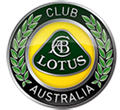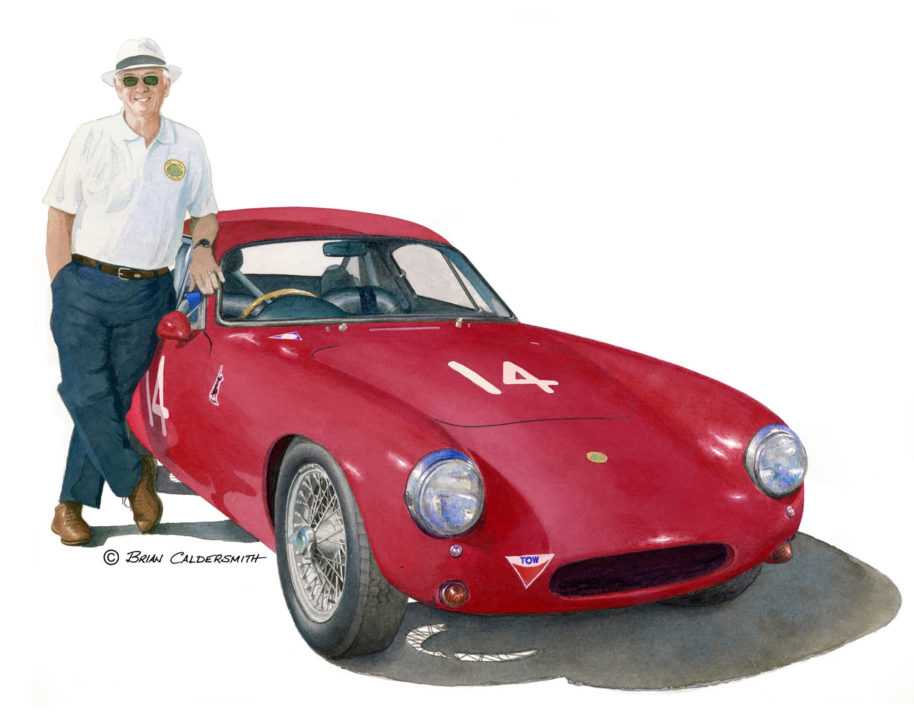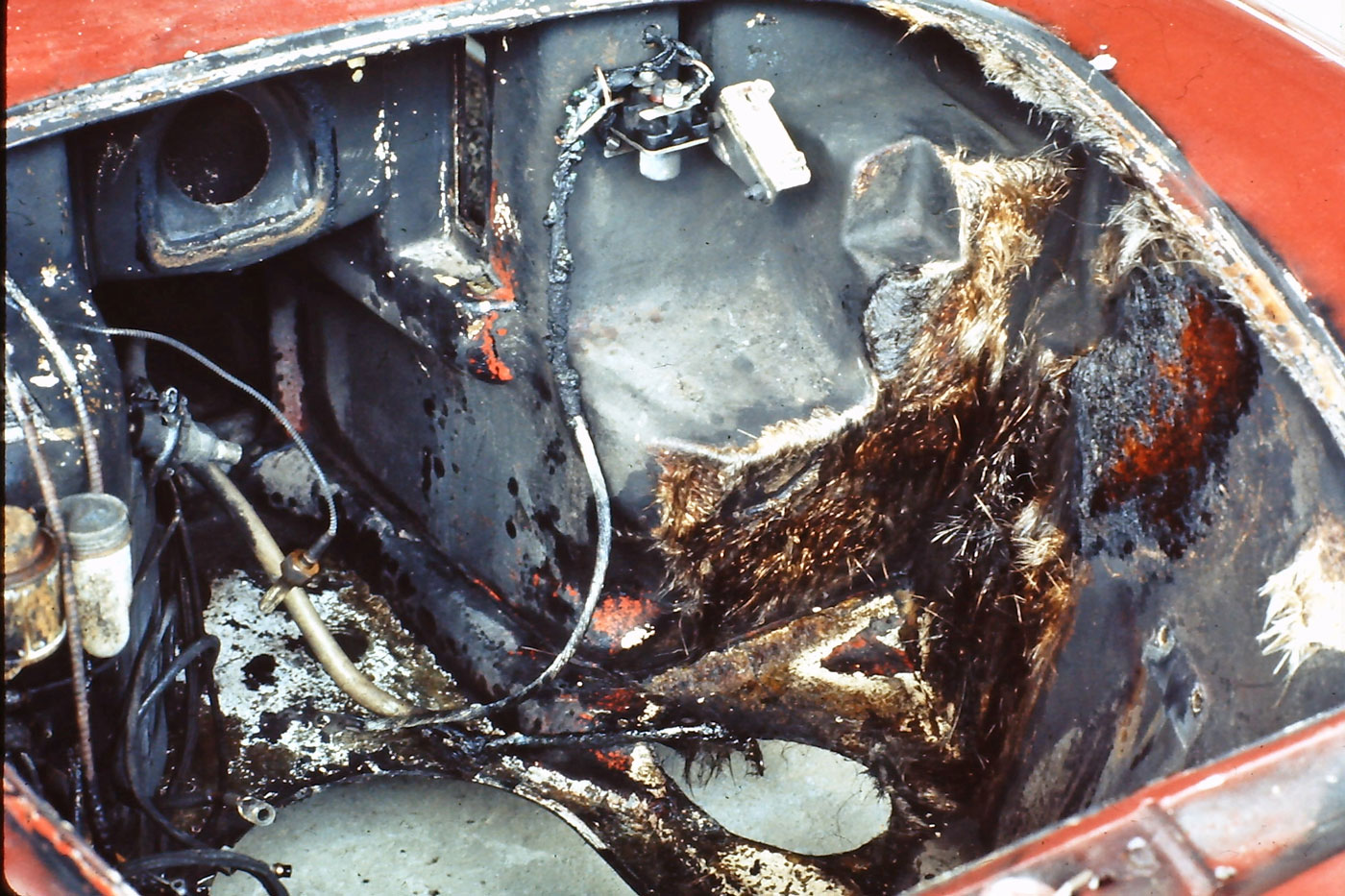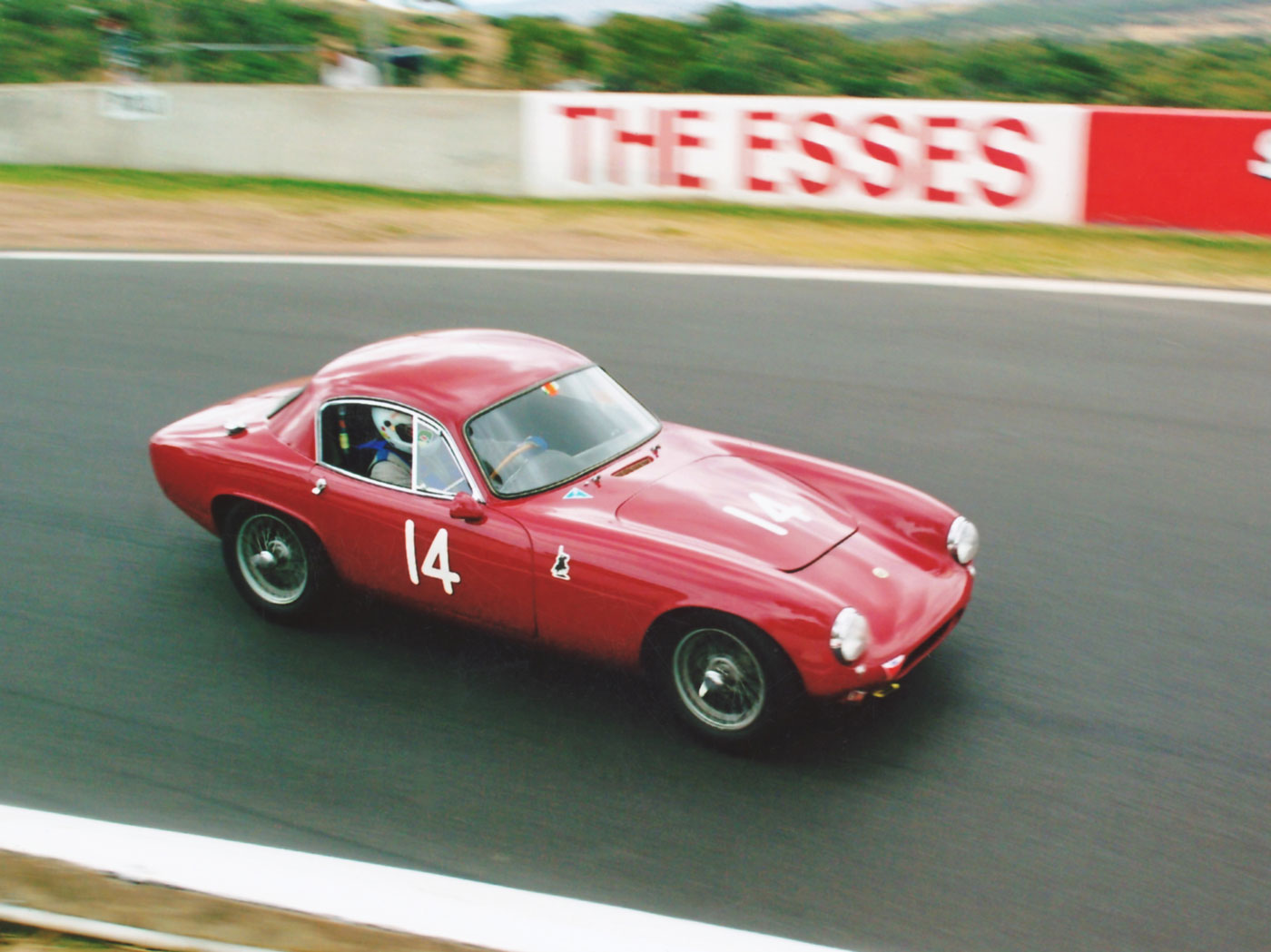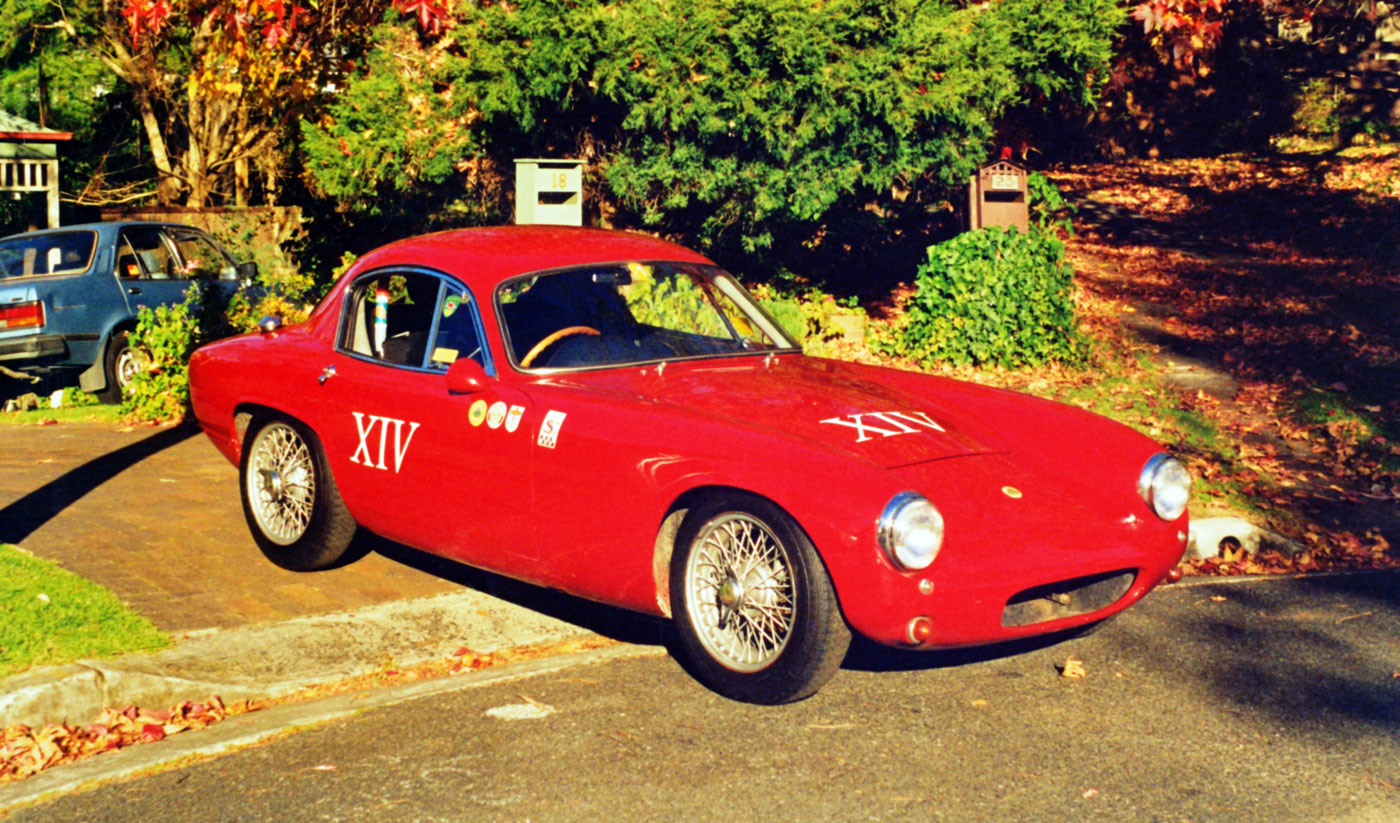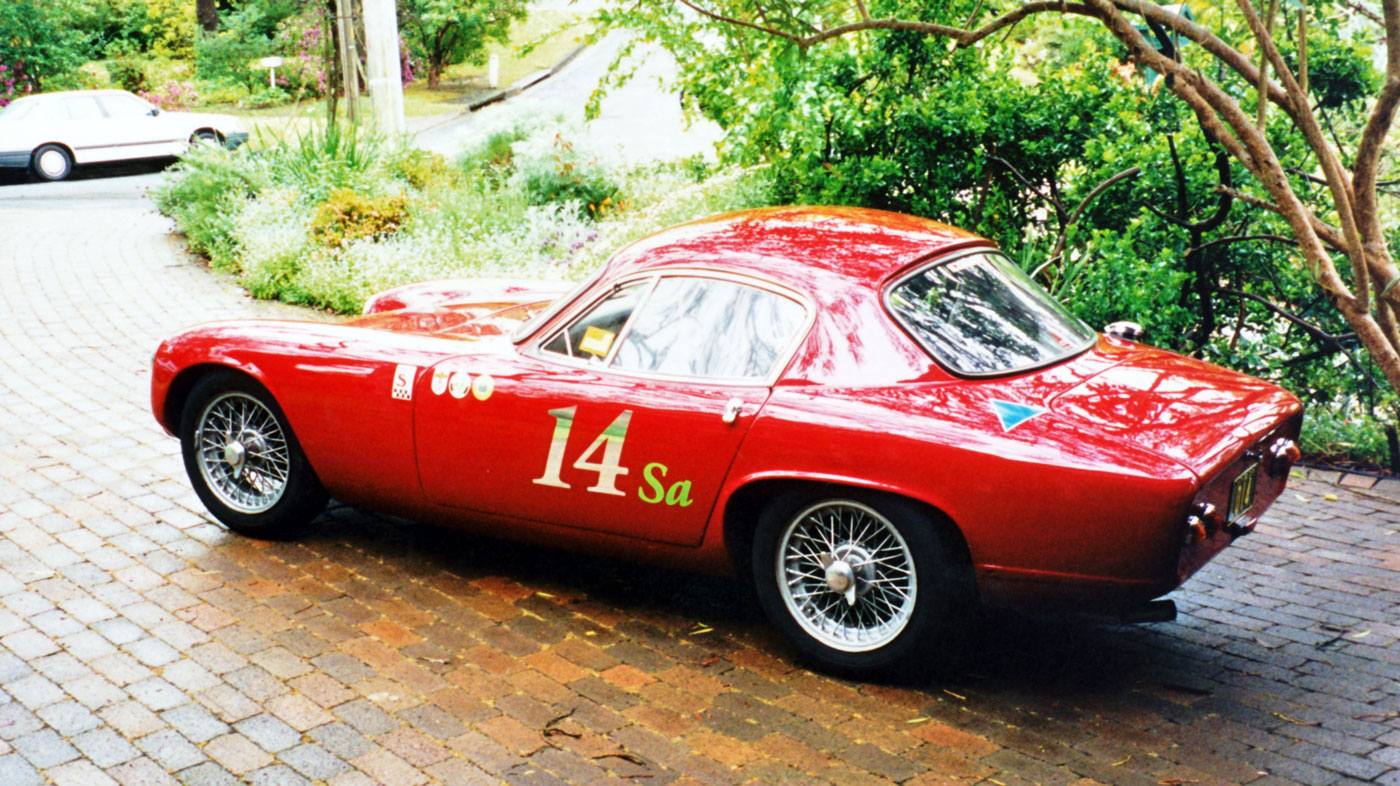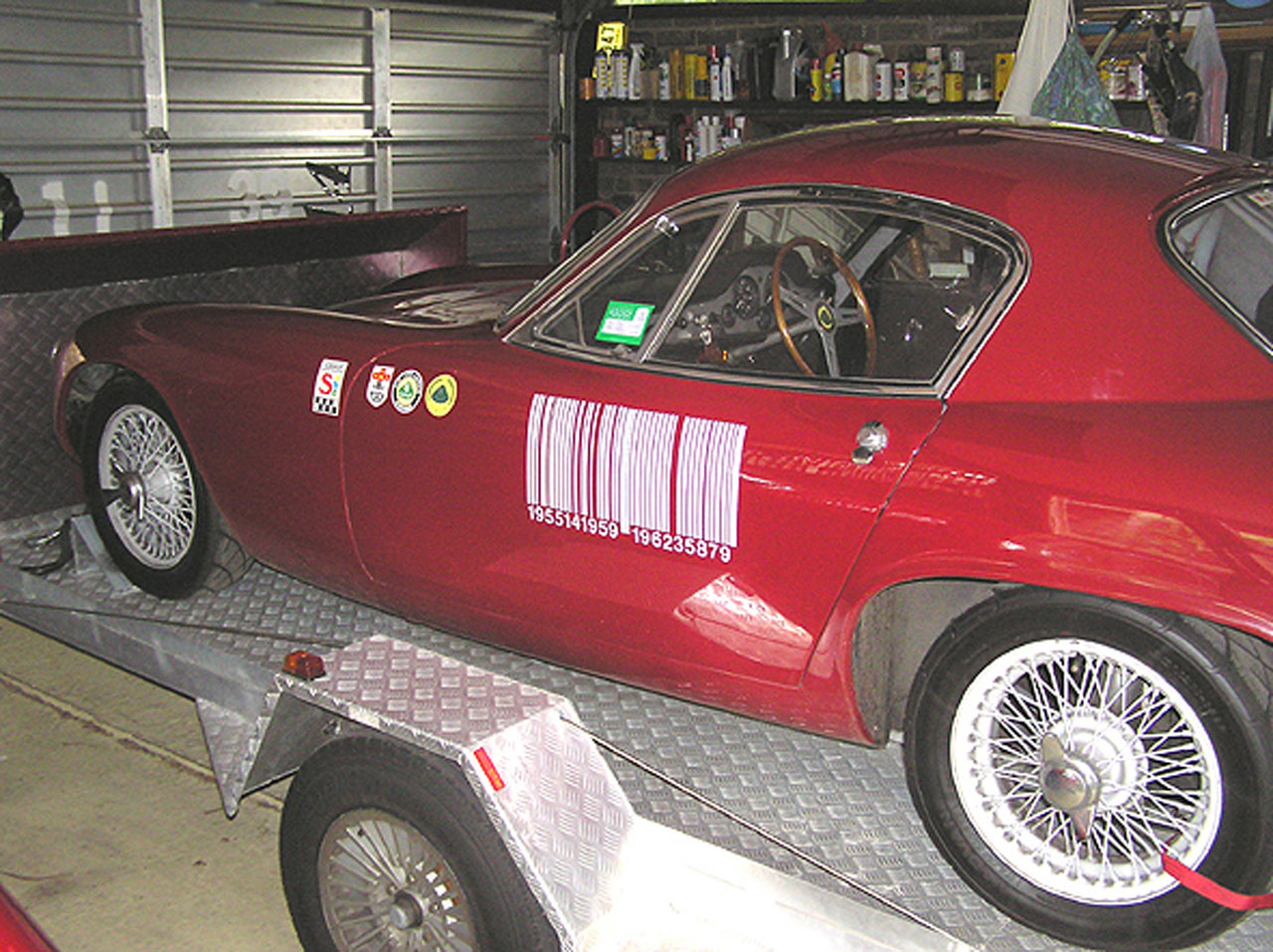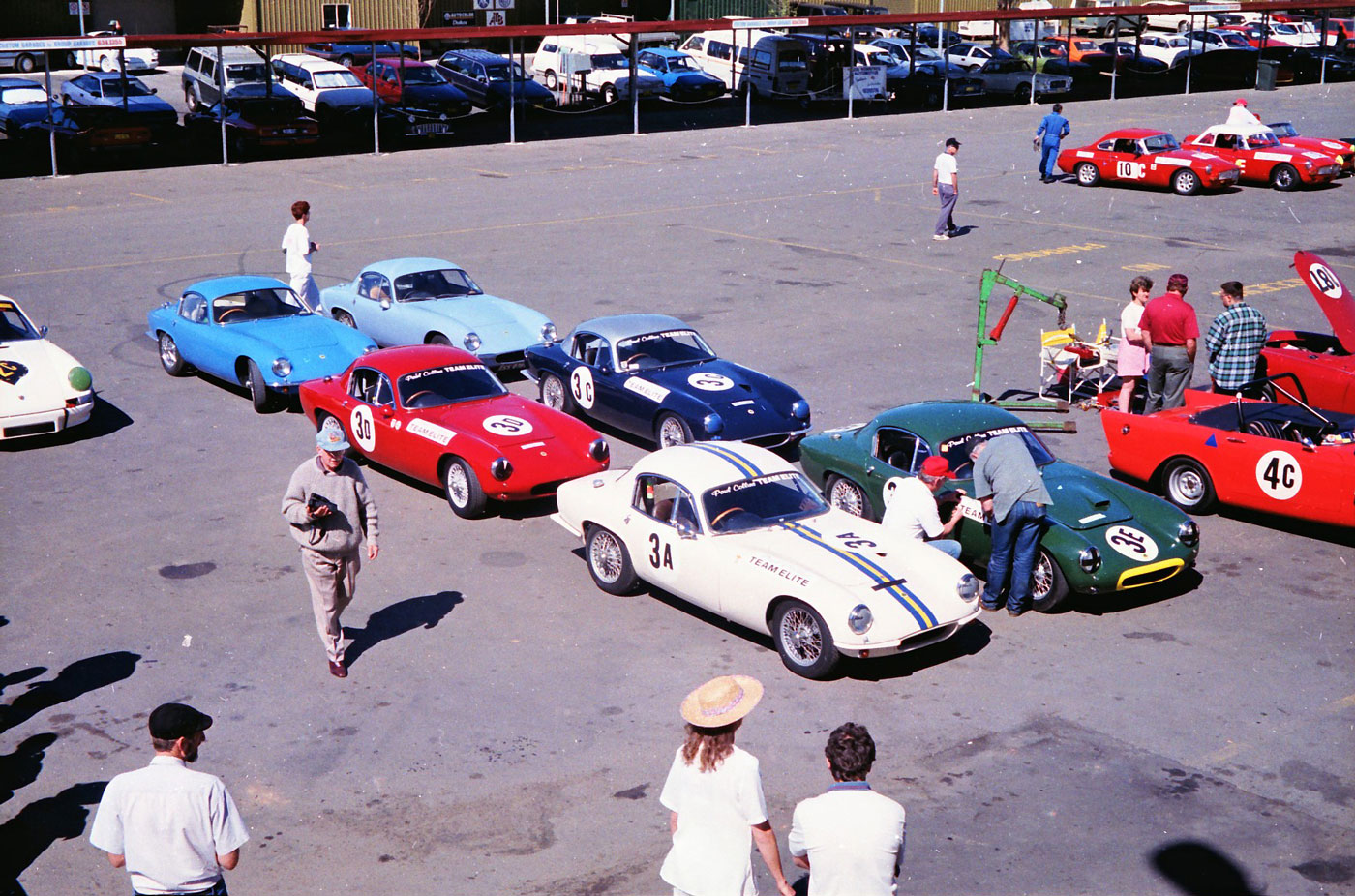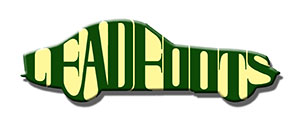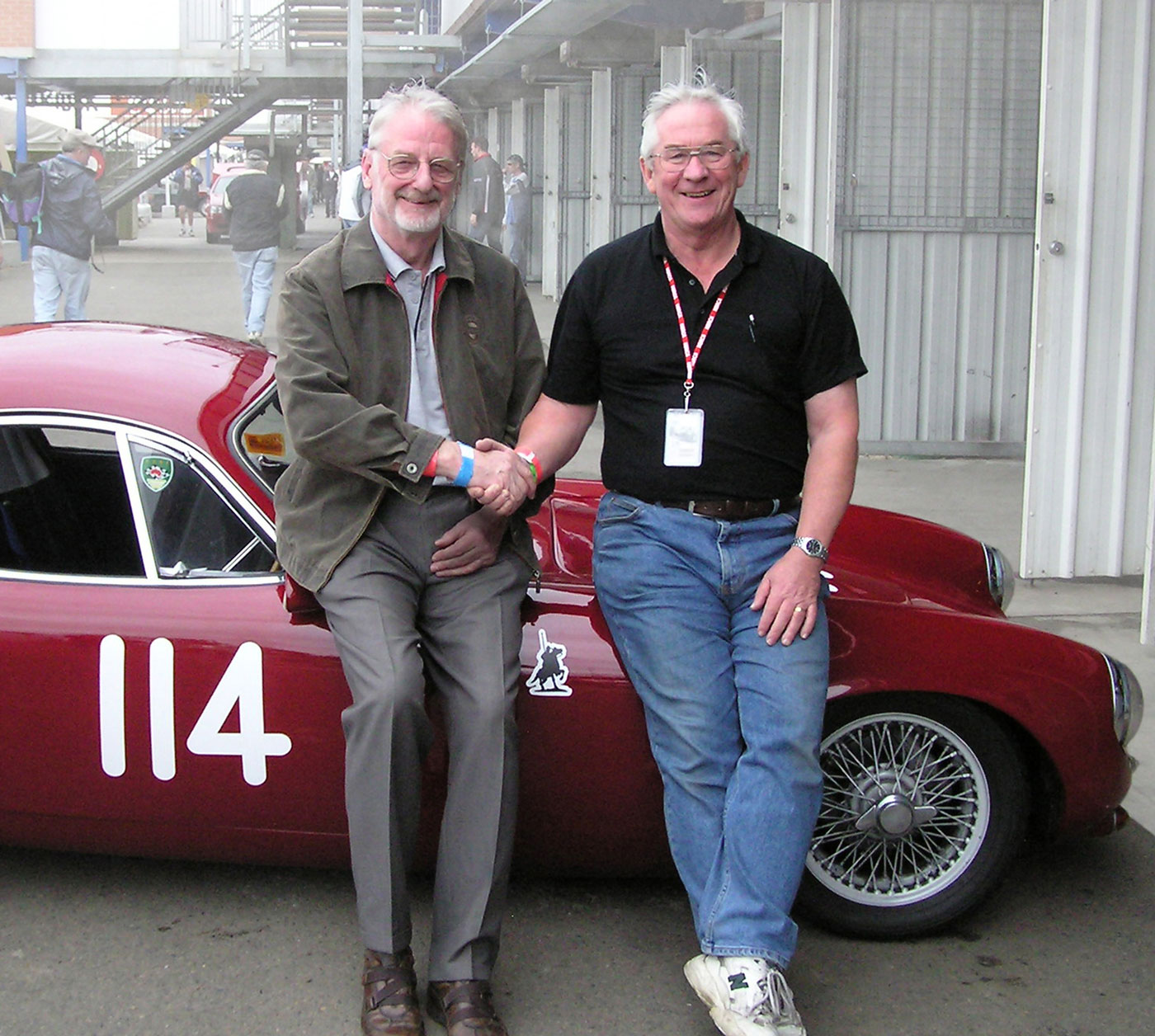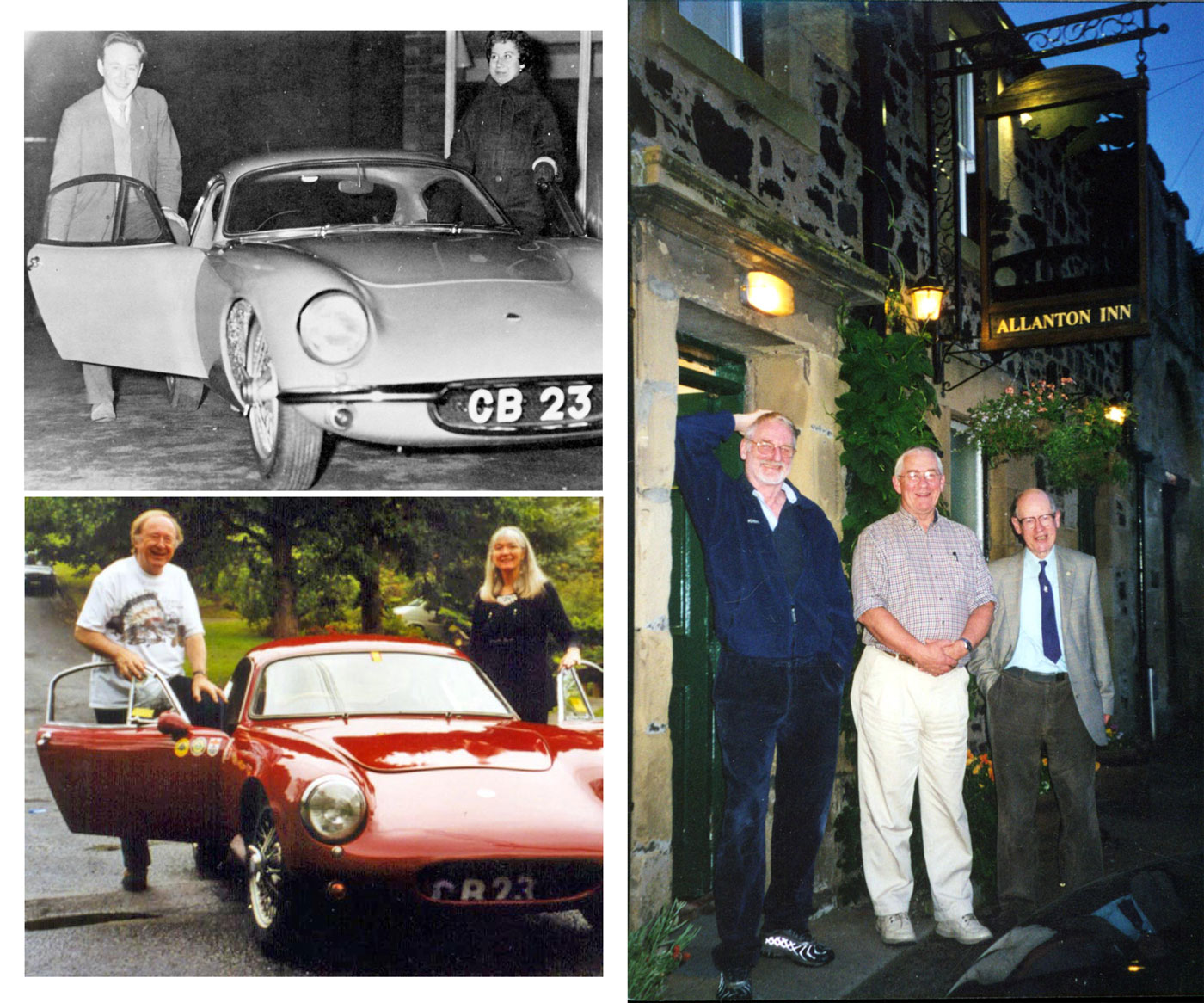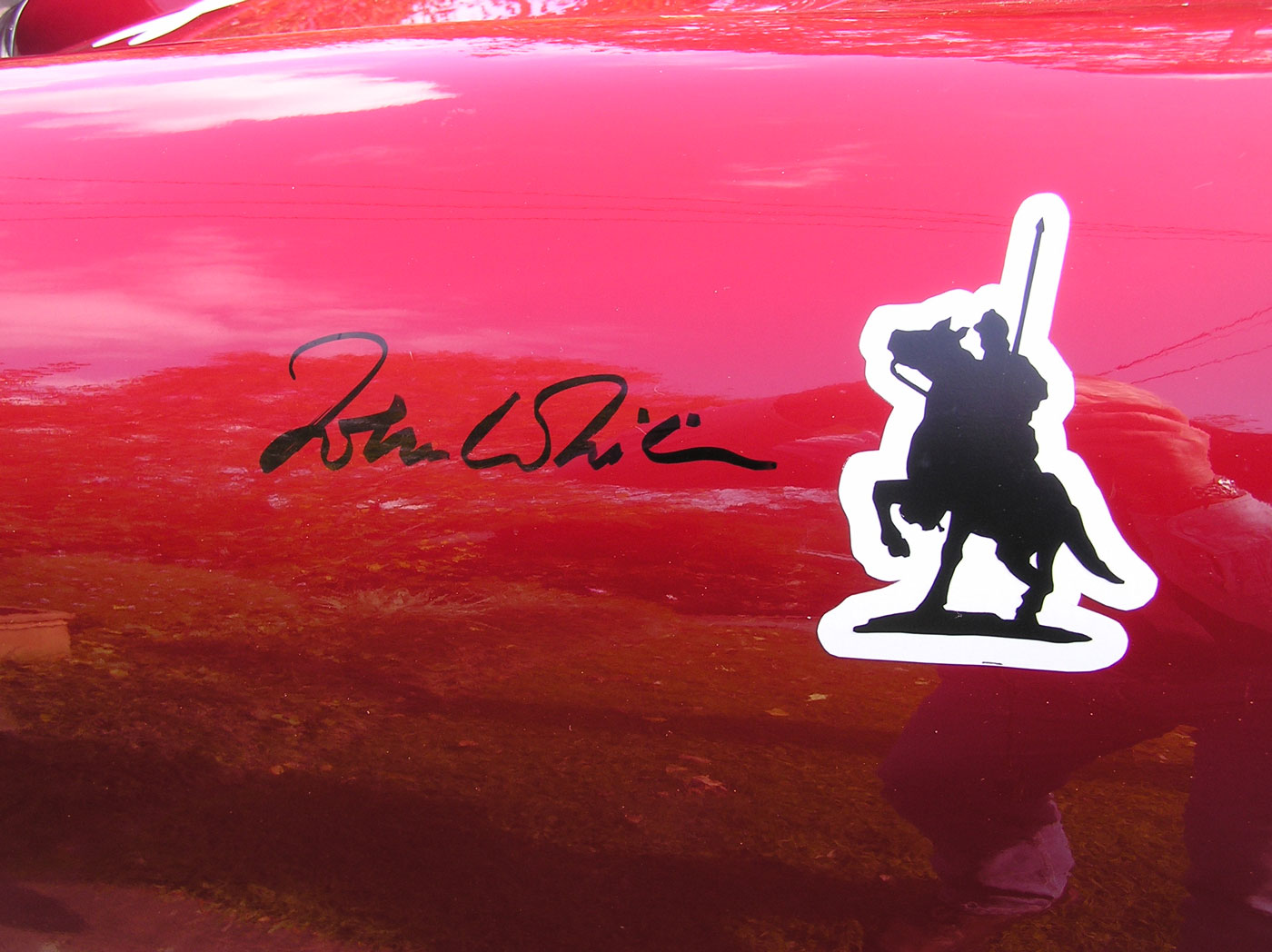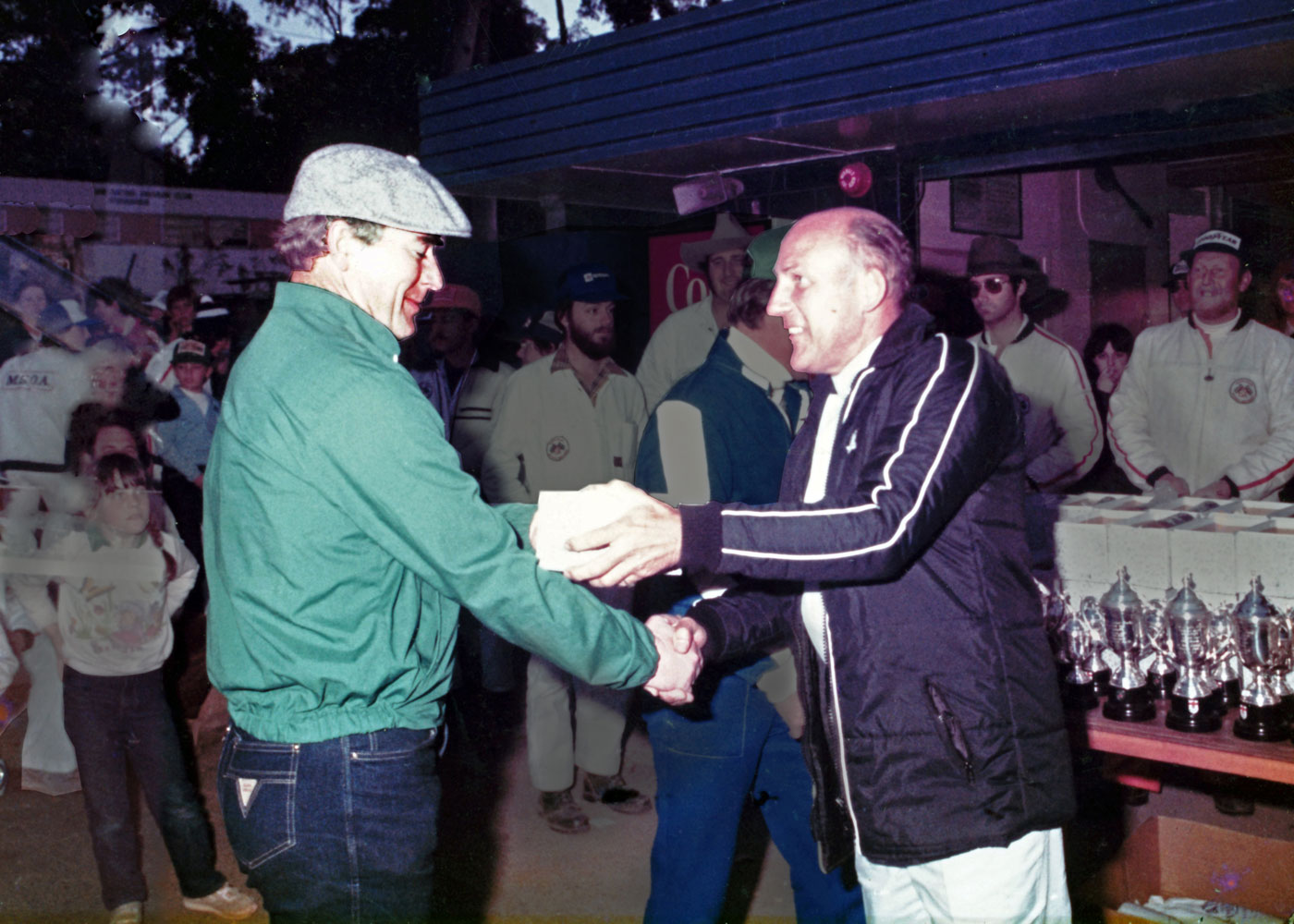Lead image by Brian Caldersmith, images with thanks to Brian Caldersmith
When Brian Caldersmith wrote to us to share his latest portrait work, completed during our nationwide nap time, and included some words on his time together with the lovely Elite featured in it, I asked if he’d be interested in sharing a couple stories. A few days later, I received the wonderful story which follows, chronicling a life of motoring, motor sport and mateship.
Read on and enjoy, with huge thanks to Brian Caldersmith.
A Long Affair
I have had a Lotus problem for a long while and have been hooked on motor racing since attending my first race meeting at Parramatta Park in 1952. I always hoped one day to join in, but not being able to afford anything, all I could do for a long while was watch.
Finally, many years later, I bought the car I had always lusted after when Barry Bassingthwaighte decided to sell his Lotus Elite. It had caught fire on the way home from work and the engine bay was badly damaged. Barry had had enough.
My restoration took way longer than planned or expected, due mainly to our family increasing with the arrival of two small children. Over too many years, there were alternating periods of intense activity and quiet contemplation, depending on the time and money available. However, I had an advantage that no other Elite owner had – my brother had worked at Lotus and actually built the first twelve pre-production Elites.
While all that was going on, we started Club Lotus Australia. David Levy organised a bunch of enthusiasts together at Pymble one night and the club was born. We elected Spencer Bates as the inaugural President, I got stuck with the Registrar’s job and we nominated Adrien Schagen as member number one, because he had owned a Lotus longer than any of us.
On finishing the restoration, the Elite was entered for the historic race meeting at Amaroo Park in 1984. That event turned out like a Hollywood film script. There was practice on Friday, qualifying on Saturday morning and a race in the afternoon with two more on Sunday. Racing it for the first time involved a steep learning curve but it was a delight to drive with excellent feel and responsiveness. Elites are very forgiving and you can learn fast.
Now, the first race was a handicap, which was perfect for me because my lap times had been dropping consistently as we got used to each other. Not easy for the handicappers. Suffice to say, I won the event after overtaking the leader with one corner to go. We had won our first ever race together!
That year we also raced at Mallala and Lakeside covering a lot of mileage. It was the start of us challenging many circuits throughout Australia over the next 30 years. And they included the inaugural historic race meetings at Phillip Island, Sandown Park, Oran Park, Eastern Creek (now Sydney Motor Sport Park), and the first ever race meeting at Wakefield Park.
We ran at the last historic meeting at Oran Park and the very last meeting at Amaroo, which was somewhat emotional because I was on the race committee for the very first meeting in 1967 and was a founder of the club that started it all. These events were all interspersed with racing at Bathurst, sprints, Guyra and Uralla GPs, Gear meetings and running at the AGP.
Because of some special work I had done in the early stages of the GEAR Club, I was given special dispensation to use any style of racing numbers rather than sticking to the official CAMS font. So, I did – and they let me get away with it!
Interestingly, the guy that raced my car at Warwick Farm in the 1960s, Peter Toohey, was the event artist for that club (AARC) and his art featured on the programmes. 30 years later, I was doing the same thing.
It is only by racing an Elite do you find out just how good they are. Nice on the road, but a whole new ball game in the thick of a race. My best example is one horrendously wet meeting at Oran park. It poured throughout practice, qualifying and racing to the extent that I was waiting for them to call it off, but the meeting continued. A few did pull out because of the conditions. After qualifying, I was astonished to see myself on pole. What? I’d never been there before. All the big guns and heavy horsepower things had floated surprisingly backwards. Rain is a wonderful equaliser of horsepower and identifier of good handling.
When the flag dropped, I took off and tried to keep it smooth. Forward vision was bad enough, but I could see nothing in any of the mirrors for all the spray. After five laps the flag came out and I had won. Wow. Amazing. Relief. But when we checked the time sheets, the second place was over half a minute behind – and I am not that good! It was a classic illustration of the superior handling of the Elite. We repeated the performance twice on Sunday in the rain and went home with three outright wins, our best ever meeting result.
I particularly enjoy six-hour races, especially in that car. They are much kinder to your car, unlike the “all bust and guts” 110% scramble up a hillclimb or five-lap screamers. It is nice to know that you do not have to get past that bloke immediately because there are only a few laps involved. You can think about it more and make your move in the best spot.
In the first six-hour that I did (Amaroo Park), I decided that since I was going to be out there for a long time, I would drop everything down by about 500rpm. But before long, I was lapping at the same times as when using full revs. You certainly settle into a circuit and things get smoother and better for the vehicle and driver in long distance racing.
Actually, CLA used to be heavily into racing and it was a CLA entry in that Amaroo 6-Hour event. We had: Richard Bale/Ford Escort, Laurie Knight/Rennmax 23B, Jim Madden/Ausca, Paul Collins/Lotus Elite and me with my Elite. Tom Devitt was Team Manager!
I had one big DNF, which was at Oran Park. Actually, it was a DNS, because it happened in practice and I never got to race. I was hammering around at the back of the circuit in 3rd gear at 7500 rpm when a rod came out the side of the block with a big bang. The cockpit filled with smoke and I pulled off instantly and rolled right down to the bottom of the infield well out of the way so the session could continue. Afterwards, a couple of officials came over and said, “That was fantastic. You looked like a Messerschmitt shot down over the English Channel”.
The day/night races at Oran Park were good because the historics had to run during the day because we had open wheelers in our group. We would then stay and watch the night racing. All over in one day with the rest of the weekend to yourself. The interesting thing was that we ran with very mixed grids and never had a problem. Racing cars and sports cars from J/K to Group O! Everybody knew everybody and drove accordingly. It would be illegal today.
Lotus Elite owners are few and far between, but a very tight knit bunch. We know pretty much where every car is and who owns what around the world. Which is why I started LEADFOOTS (Lotus Elite Association of Drivers, Followers, Owners, Operators, Tinkerers and Suchlike) in 1997. The following extract from the inaugural invitation illustrates the theme of the group:
“LEADFOOTS is an informal collection of like-minded souls who gather at infrequent intervals to enjoy the food, wine and company. They also talk a great deal about a limited range of subjects.
You may not have been aware of your membership in this august body, because it happens by default, and there is no notification, membership fee, newsletter, Committee or structured organisation. Nor are there any applications, appraisals, submissions or resignations from the group. The LEADFOOTS acronym explains your involvement.
We will assemble from time to time at appropriate locations to sympathise and assist, commiserate and boast, and speak of cabbages and kings.”
Whilst it began with just a couple of dozen enthusiasts with an Elite focus it grew steadily over 20 years to absorb anybody with a love of the 50s and 60s era of motor sport. Drivers, owners, mechanics, journalists, photographers, international visitors and just plain enthusiasts were involved. At one memorable event in Goulburn, there was over one hundred in attendance with an overnight stay.
One of the great things about historic racing (and Lotus Elites) is the people involved. The friendships and social occasions arising often end up being more significant than the vehicle itself. And I have been very fortunate in that respect.
Sir John Whitmore was a good friend who finally let me convince him to come out to Australia and share my car at a Tasman Revival meeting. He had co-driven at Le Mans with Jim Clark in the Border Reivers Elite, so I knew it would be in good hands. John stayed at our place and had so much fun he came back for the next Revival two years later. This time though, I organised another Elite for him to drive so I could race with him. Alan Cruikshank was kind enough to offer his car and we had some very interesting discussions about driving techniques during those times.
There was a wonderful afternoon when John and I were getting ready to watch the Australian Grand Prix and the phone rang. It was Frank Gardner, “I believe you’ve got that Pommie Whitmore with you. Are you going to watch the AGP?” “Err, yes”. “OK, I’ll be over”.
Frank and John had raced together many times in Elites, Ford GT 40s and several other things so there was a fair bit of reminiscing going on. That developed into a very funny afternoon.
Early on, John raced Elites for Chris Barber, the well-known Jazz band leader who was the first person to buy a production Elite and had been racing himself for some time in various Lotus cars. He was in the famous 1958 Boxing Day Brands Hatch meeting when Jim Clark came to Colin Chapman’s attention by leading Colin and Mike Costin in works Elites. Chris found John was always faster than him so he stepped back and concentrated more on his music.
When Chris was touring Australia with his band, he came home with his wife Kate for a BBQ one afternoon and I sent them off for a drive in my Elite. He arrived back grinning from ear to ear and muttering about trying to buy back his old car. For a bit of fun, we re-created the original photo of him picking up his car at Lotus. Interestingly, he was not going to buy the thing until he saw that his trombone fitted into the boot!
The other important Elite connection is with Ian Scott-Watson and Border Reivers. Ian was Jim Clark’s mentor and first manager. He organised the Elite for Jim and John to race at Le Mans as a Border Reivers entry in 1959.
John Whitmore and I had a personal tour of the Jim Clark Room with Ian, after which we retired to the old Border Reivers “clubrooms” at the Allanton Inn for dinner. As I had also been mechanic to Ron Flockhart (another Scotsman and Le Mans winner) at Warwick Farm when he came out to Australia with his Lotus 18 in 1962, Ian saw fit to allow the Border Reivers badge on my Elite for the duration of my ownership. Something I really treasured.
More locally, one of my treasured photos is of Stirling Moss presenting me with an RAC trophy. Jaguar brought him out to Australia one year and he was the featured driver at a historic meeting at Amaroo along with the task of handing out trophies.
Chassis number EB 1591 and I were together for 45 years and had some wonderful times with some wonderful people. We competed in a wide range of events and shared the car with some of those people. Over that time, she has featured in several books and many magazines (and has lap records in perpetuity at the now defunct race circuits).
It was the best of times.
Brian Caldersmith
For more from Brian check out his book ‘Caldersmith’s Irreverent guide to Classic Cars & Motorsport‘ available at Haynes.
